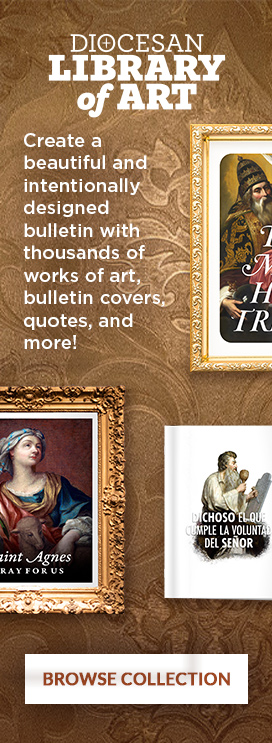Today is not only a feast day on the Roman Catholic liturgical calendar, but a Solemnity – the top of the feast day hierarchy in the Roman Rite. Like Christmas and Easter, the Solemnity of the Immaculate Conception is also a holy day of obligation where all Catholics center their joy (Lat. – festes) in the Holy Sacrifice of the Mass. It is also one of the very few solemnities (Lat. – solet, annus; “yearly celebration”) on the Universal Calendar with a fixed date (e.g., Dec. 8) each year.
Clearly this is a special day, but what is so special about this day that it is placed right smack in the middle of Advent and only two weeks before Christmas? What is the Church, our Mother and Teacher, calling to our attention as we wait with expectant hope for the birth of our Lord and Savior? Why should we care?
All Solemnities are Christological, meaning, they call special attention to Jesus Christ either directly or indirectly through Mary or the saints. The Marian days – Mother of God, Annunciation, Assumption, Immaculate Conception – are no exception. As with Mary herself, these Marian Solemnities take their dignity from, and direct us to, Christ himself.
Two peculiar things challenge us, however, with the Solemnity of the Immaculate Conception. The first is that is refers to the conception of Mary not Jesus. That point has not only stumped every CCD or RCIA student, but arguably every adult since 1854, the year of Pope Pius IX’s dogmatic proclamation in Ineffabilis Deus:
“The most Blessed Virgin Mary was, from the first moment of her conception, by a singular grace and privilege of almighty God and by virtue of the merits of Jesus Christ, Savior of the human race, preserved immune from all stain of original sin.”
Admittedly, the title alone – Immaculate Conception – does seem to speak to the incredible event of God becoming man – the Incarnation – in the womb of a seemingly unremarkable, ordinary virgin woman. Christmas celebrates the birth of Christ, so the Immaculate Conception must celebrate the conception of Christ, right?
Here, you well-catechized readers shout “No!”. But, a more nuanced answer would be, “Not exactly…” – begging the question of our second challenge: How and why was Mary conceived without sin in the womb of her mother Anne?
As one of the precious few dogmatic beliefs of the Catholic Faith, the Blessed Virgin Mary’s Immaculate Conception must be believed by every faithful Catholic. Therefore, our first principle is that this is no longer a matter of proving or convincing, but of our faith seeking understanding. Our posture is like Mary herself questioning the angel Gabriel (“How can this be since I do not know man?”), not Zechariah (“How shall I know this? For I am an old man, and my wife is advanced in years.”). So, how can this be, and why?
The Catechism of the Catholic Church answers this directly, quoting the Second Vatican Council in Lumen Gentium (Dogmatic Constitution of the Church):
To become the mother of the Savior, Mary “was enriched by God with gifts appropriate to such a role (munus).” CCC 490; LG 56
It is the work of God, and God alone. By particular grace of God, He made Mary full of grace at the moment of her creation. Keep in mind that the conception of every human person is the direct action of God, specifically the work of the Holy Spirit whom we proclaim every Sunday as “…the Lord, the giver of life, who proceeds from the Father and the Son.” Therefore, the particular, singular grace of Mary’s conception was not the participation of God in her creation, but
“The ‘splendor of an entirely unique holiness’ by which Mary is ‘enriched from the first moment of her conception’ comes wholly from Christ: she is ‘redeemed, in a more exalted fashion, by reason of the merits of her Son.’ The Father blessed Mary more than any other created person ‘in Christ with every spiritual blessing in the heavenly places’ and chose her ‘in Christ before the foundation of the world, to be holy and blameless before him in love.’” CCC 492
Mary was conceived without sin for her munus (Lat. – gift, role, task, mission, vocation, high office, high honor) as the Mother of God.
In fact, in order for Mary to be able to give the free assent of her faith to the announcement of her vocation, it was necessary that she be wholly borne by God’s grace. CCC 490
The dignity (worth, value) of this munus included the ineffable grace of being the first new creation in Christ. With Christ as the new Adam, Mary is the new Eve: the true mother of all the living. We are the living. She is our Mother (“Here is your mother”, John 19:27). “Death through Eve, life through Mary.” (LG 56). What had kept us bound is now unloosed! In the words of St. Irenaus:
“And so, the knot of Eve’s disobedience received its unloosing through the obedience of Mary; for what Eve, a virgin, bound by incredulity, that Mary, a virgin, unloosed by faith.”
So, what is so special about this day that is placed right smack in the middle of Advent and only two weeks before Christmas?
On this day, we celebrate the reality of our inheritance. With awe, wonder, and fascination we celebrate one who has already received what we hope for: eternal life, fullness of grace, and fullness of joy! Alleluia! What we long for has already been done for our Mother.
May the Solemnity of the Immaculate Conception prepare and encourage our fiat: “Let it be done to me according to your Word!” Amen.
 Damon Owens is the executive director of joytob (joytob.org) and served as the first executive director of the Theology of the Body Institute near Philadelphia. He lives in the Archdiocese of Philadelphia with his wife Melanie and their children – including their “true image of Mary” Veronica Mary celebrates her birthday each year on the Solemnity of the Immaculate Conception!
Damon Owens is the executive director of joytob (joytob.org) and served as the first executive director of the Theology of the Body Institute near Philadelphia. He lives in the Archdiocese of Philadelphia with his wife Melanie and their children – including their “true image of Mary” Veronica Mary celebrates her birthday each year on the Solemnity of the Immaculate Conception!
